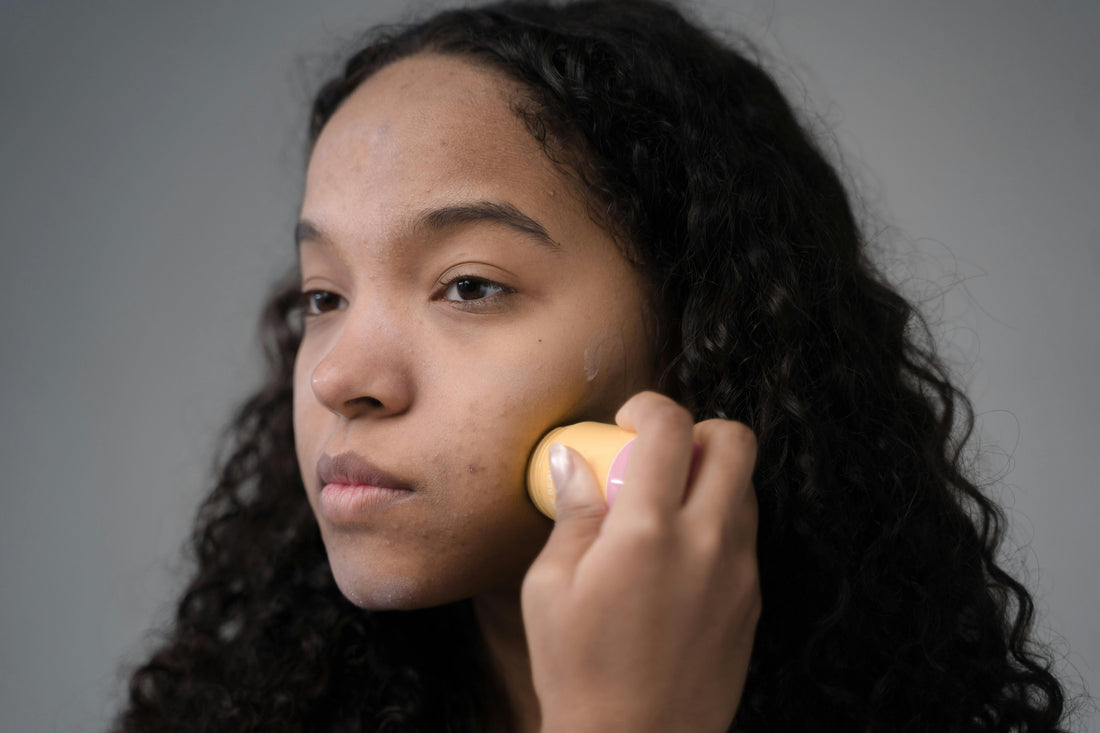by Camilla Vaiani
TL;DR
A highlighter reflects light to enhance facial features and add glow. The four main types are powder, cream, liquid, and stick, each suitable for different skin types. Choose your highlighter shade based on your skin undertone (cool, warm, or neutral). Apply it to the high points of the face and body: cheekbones, brow bone, Cupid’s bow, nose bridge, collarbones, and shoulders. Highlighter adds light, contouring adds shadow; together they create a sculpted, three-dimensional effect.
If Rihanna were writing this, she would start with: “Shine bright like a diamond.”
That is exactly what highlighter does: it gives your face a glow that feels both natural and captivating.
But how should you really use it? Should you apply it before or after foundation? And which type is right for your skin? This article answers those questions.
What Is a Highlighter in Makeup?
A highlighter is a cosmetic designed to reflect light and emphasize specific areas of the face or body. Common application areas include the cheekbones, temples, brow bone, Cupid’s bow, inner corners of the eyes, nose bridge, collarbones, and shoulders (Chatelaine, 2024).
The goal is to illuminate and draw attention to your features while giving your skin a healthy radiance.
What Types of Highlighters Are Best for Different Skin Types?
There are four main categories:
- Powder highlighter: Popular and versatile, ideal for oily skin; available in matte, shimmer, or glitter finishes.
- Cream highlighter: Offers the most natural finish, perfect for dry or mature skin.
- Liquid highlighter: Can be mixed with foundation or primer for an all-over glow, giving a dewy finish.
- Stick highlighter: Convenient and portable, great for touch-ups and a natural, subtle effect.
How Can You Choose the Right Highlighter for Your Undertone?
Choosing the ideal highlighter can be tricky and often requires some experimentation to find the perfect one for each of us. Besides skin type, which helps determine the most suitable texture, it's essential to consider the skin's undertone. This guides us in choosing the most appropriate highlighter shade (Medium, 2023):
- Cool undertones: Best shades include silver, ice, pearl, or champagne. Avoid gold tones.
- Warm undertones: Copper, gold, and bronze shades work best. Avoid cool tones.
- Neutral undertones: Both cool and warm shades can work; experiment with silver, gold, pink, and red tones.
Where Should You Apply Highlighter?
Highlighter is meant for the high points of the face and body that naturally catch the light (L’Oréal Paris, 2024), such as:
- Cheekbones
- Cupid’s bow
- Inner corners of the eyes and under-eye area
- Brow bone and center of the eyelids
- Bridge of the nose
- Collarbones and décolleté
- Shoulders
How Should You Apply Highlighter Step by Step?
- Primer: Creates a smooth, even base.
- Foundation: Evens out the skin tone.
- Contouring or blush: Adds definition and color before highlighting.
- Highlighter: Use fingers or a sponge for liquid formulas; brushes work best for powders. Start small and build gradually.
- Setting spray: Locks makeup in place for lasting radiance.
Highlighter is generally applied after foundation. However, liquid or cream formulas can be blended with foundation for a softer, diffused glow.
Remember: all these tips should be considered as suggestions and not rigid rules to follow. Everyone can choose their preferred method, although it's always better to match products based on their consistency (L’Oréal Paris, 2024).
What Is the Difference Between Highlighting and Contouring?
Highlighting and contouring are complementary techniques but serve opposite purposes.
- Highlighter accentuates areas where light naturally hits the face, adding radiance.
- Contouring creates shadows with darker shades, sculpting and defining features (Recode, 2023).
Used together, they create a balanced, three-dimensional effect that enhances bone structure.
Why Choose Lebubè’s Cream Highlighter?
Lebubè’s Cream Highlighter has a universal pearly tone that works across skin tones. Its lightweight formula delivers a natural glow for both face and body.
It is also a hybrid cosmetic, blending skincare with makeup benefits. Its active ingredients – upcycled rice and red algae extract – offer moisturizing, protective, and refreshing properties.
Proven results (in vivo and in vitro tests on 41 people with dry skin, 28 days of use):
- +9% hydration after 30 minutes
- +11% hydration after 120 hours
- –8% transepidermal water loss after 28 days
- +26% softness after 14 days

FAQs
How many types of highlighters are there?
There are four: powder, cream, liquid, and stick.
How do I know which highlighter to use?
Match the formula to your skin type and the shade to your undertone.
Which highlighter shade is best for my undertone?
Cool undertones: silver, ice, pearl, champagne. Warm undertones: gold, bronze, copper. Neutral undertones: both cool and warm shades work.
Where should I apply highlighter?
On the high points of the face and body that naturally catch light.
Do you apply highlighter before or after foundation?
Usually after foundation, unless using liquid or cream mixed with the base.
What is the difference between highlighter and contour?
Highlighter adds light and radiance; contour adds shadow and definition.




